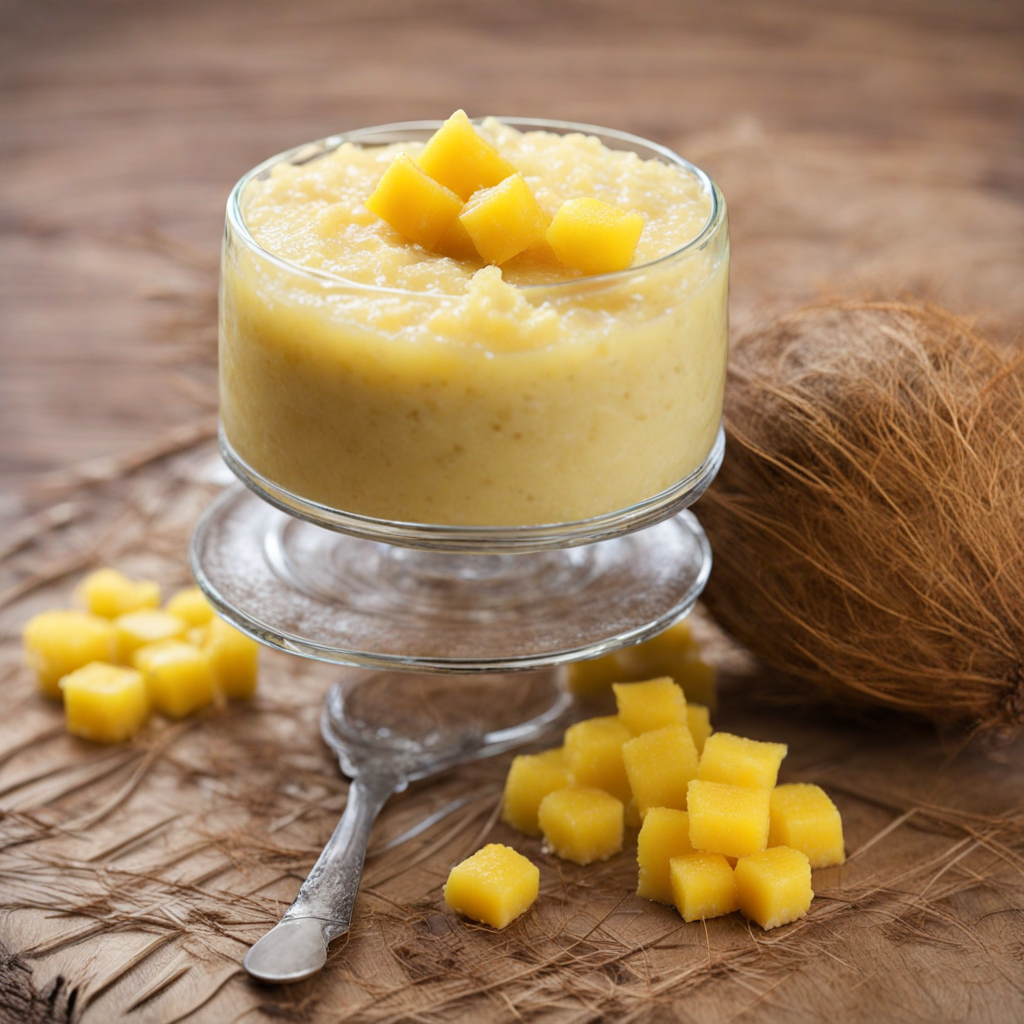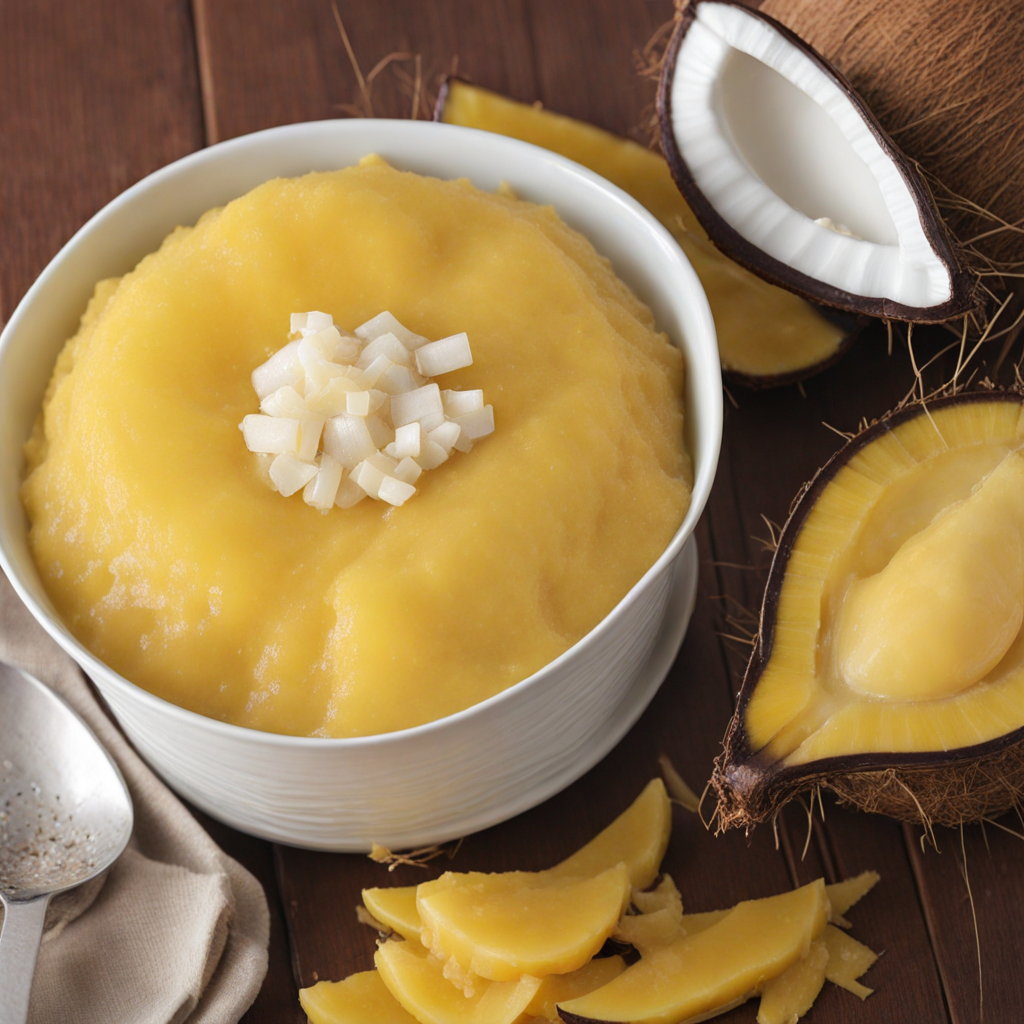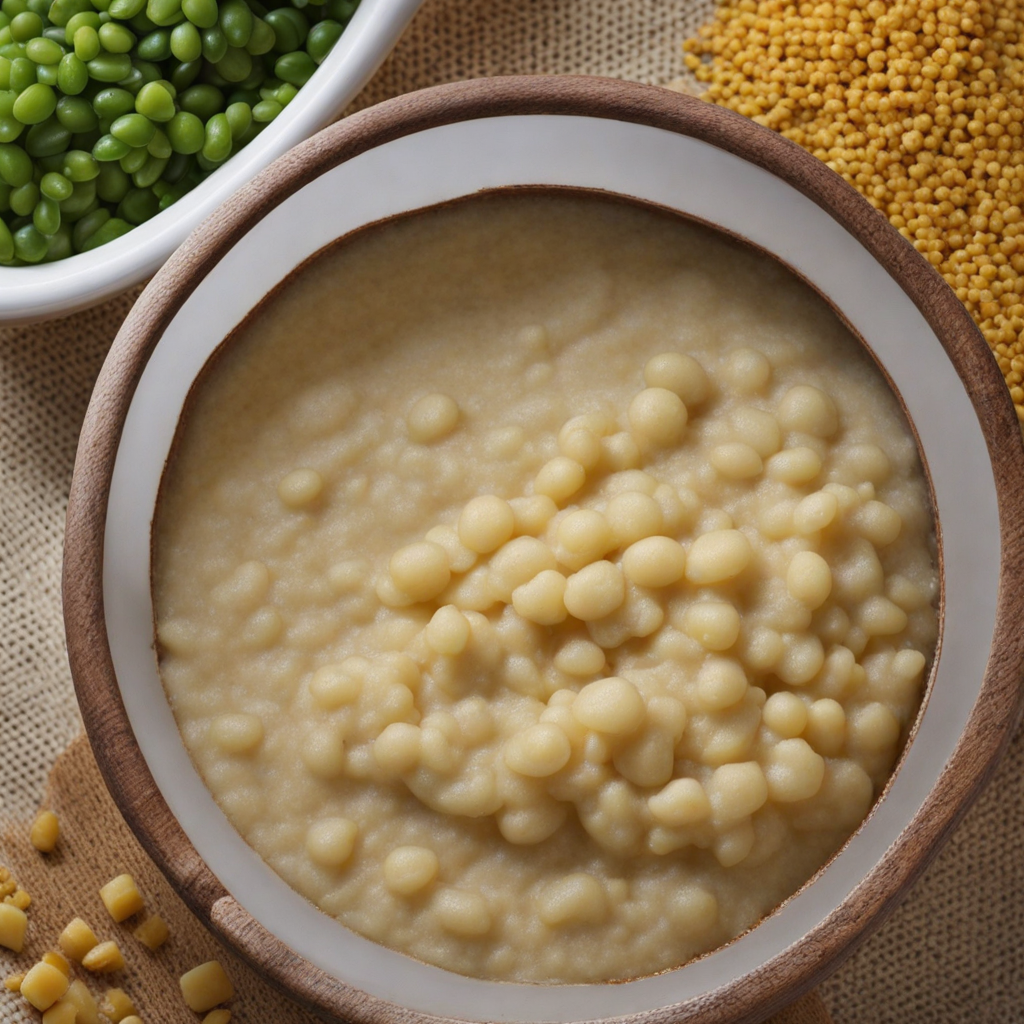Cocada Amarela
Cocada Amarela is a delightful traditional dessert from Mozambique that captures the essence of the country's rich culinary heritage. This vibrant treat is primarily made from fresh grated coconut, sugar, and a hint of vanilla, resulting in a sweet and aromatic flavor profile. The golden hue of the cocada comes from the addition of egg yolks, which not only intensifies the color but also adds a creamy texture that melts in your mouth. Each bite reveals a perfect balance between sweetness and the natural richness of the coconut, making it an irresistible indulgence for those with a sweet tooth. The preparation of Cocada Amarela is relatively simple but requires attention to detail to achieve the ideal consistency. The grated coconut is combined with sugar and egg yolks, then cooked gently until it reaches a thick, sticky consistency. Once cooled, the mixture is shaped into small, bite-sized pieces or bars, often garnished with toasted coconut flakes for added crunch. This homemade treat is often enjoyed during special occasions and celebrations, symbolizing the warmth and hospitality of Mozambican culture. Cocada Amarela is not just a dessert; it is a sensory experience that transports you to the sun-kissed shores of Mozambique. The combination of textures—soft and chewy with a slightly crunchy exterior—creates a satisfying mouthfeel. The tropical flavors of fresh coconut evoke a sense of paradise, making Cocada Amarela a perfect introduction to the diverse and vibrant world of Mozambican cuisine. Whether enjoyed on its own or paired with a cup of tea, this sweet treat is sure to leave a lasting impression on anyone eager to explore new culinary horizons.
How It Became This Dish
The Sweet Legacy of Cocada Amarela: A Culinary Journey from Mozambique #### Origins Cocada Amarela, a delightful coconut-based confection, hails from Mozambique, a land steeped in rich cultural history and diverse culinary traditions. The name "Cocada" stems from the Portuguese word for coconut, reflecting Mozambique's colonial past and the intermingling of Portuguese and indigenous cultures. The term "Amarela," meaning yellow, refers to the vibrant hue of the dish, often achieved through the use of egg yolks or food coloring. The roots of Cocada Amarela can be traced back to the introduction of coconut palms to the African coast by early traders and explorers. The Portuguese colonizers, who arrived in Mozambique in the late 15th century, brought with them various ingredients and culinary techniques from their homeland, including the use of coconut in desserts. The coastal regions of Mozambique, with their abundant coconuts, became fertile ground for this sweet treat to flourish. Cocada itself is a type of coconut candy that can be found in various forms across Latin America, Africa, and the Caribbean, but the Mozambican version is distinct for its use of local ingredients and traditional preparation methods. It embodies the fusion of Portuguese techniques with local flavors, creating a unique culinary identity that speaks to Mozambique's complex history. #### Cultural Significance Cocada Amarela holds a special place in the hearts of many Mozambicans. It is more than just a sweet treat; it is a symbol of hospitality and community. Traditionally, this confection is prepared during festive occasions, family gatherings, and celebrations, such as weddings, birthdays, and religious holidays. The act of making Cocada Amarela often brings families together, as members join in the preparation, sharing stories and laughter while creating a beloved dish. In Mozambican culture, food plays a vital role in connecting people, and Cocada Amarela serves as a bridge between generations. Grandmothers often pass down their recipes to younger generations, ensuring that the tradition of making this sweet persists. The process of making Cocada Amarela is also a sensory experience, as the aroma of toasted coconut fills the air, and the vibrant colors of the dish evoke feelings of joy and celebration. The dish is often served alongside other traditional foods, creating a colorful and diverse spread that reflects the rich culinary tapestry of Mozambique. It is not uncommon to find Cocada Amarela at street vendors and local markets, where it is enjoyed as a snack or dessert by people from all walks of life, highlighting its accessibility and popularity. #### Development Over Time As Mozambique has evolved through the years, so too has Cocada Amarela. The country has undergone significant changes since gaining independence from Portugal in 1975, experiencing political turmoil, economic challenges, and a resurgence of cultural pride. Throughout these changes, Cocada Amarela has remained a constant, adapting to new influences while retaining its core identity. In the late 20th and early 21st centuries, there was a revitalization of interest in traditional foods as a means of cultural expression and national identity. Chefs and home cooks alike began to explore Mozambique’s culinary heritage, including Cocada Amarela, showcasing it in modern contexts while honoring its roots. This revival has led to innovative variations of the dish, incorporating new flavors and techniques that appeal to younger generations. One notable development is the increasing use of sustainable and organic ingredients, reflecting a global trend towards health-conscious eating and environmental awareness. Many modern interpretations of Cocada Amarela now include locally sourced ingredients, emphasizing the importance of supporting local farmers and preserving biodiversity. As awareness of the nutritional benefits of coconuts grows, Cocada Amarela is also being embraced for its health properties, including its high fiber content and natural sweetness. Furthermore, the globalization of food culture has allowed Cocada Amarela to cross borders, reaching the tables of food enthusiasts worldwide. International culinary events, food festivals, and social media platforms have played a significant role in promoting this delightful treat beyond Mozambique, where it is celebrated not only for its taste but also for its cultural significance. #### Ingredients and Preparation Cocada Amarela is typically made from a few simple yet essential ingredients: grated coconut, sugar, egg yolks, and a pinch of salt. The process begins with toasting the grated coconut until golden brown, which intensifies its flavor. Subsequently, the toasted coconut is combined with sugar and egg yolks, creating a sticky mixture that is then molded into small, bite-sized pieces. The texture of Cocada Amarela is a delightful contrast between the chewy coconut and the sweet, rich binding created by the egg yolks. This combination results in a treat that is both satisfying and indulgent. Some variations may include additional ingredients such as vanilla, lemon zest, or spices like cinnamon, adding depth and complexity to the flavor profile. #### Conclusion Cocada Amarela is more than just a delicious dessert; it is a reflection of Mozambique's history, culture, and resilience. From its origins in the meeting of Portuguese and African culinary traditions to its status as a cherished symbol of community and hospitality, Cocada Amarela has evolved while maintaining its essence. As Mozambique continues to navigate the complexities of modern life, this sweet treat remains a testament to the enduring power of food to connect people, celebrate heritage, and create lasting memories. As more individuals discover and appreciate Cocada Amarela, it is poised to leave an indelible mark on the global culinary landscape, inviting everyone to savor a taste of Mozambique's rich history and vibrant culture.
You may like
Discover local flavors from Mozambique







